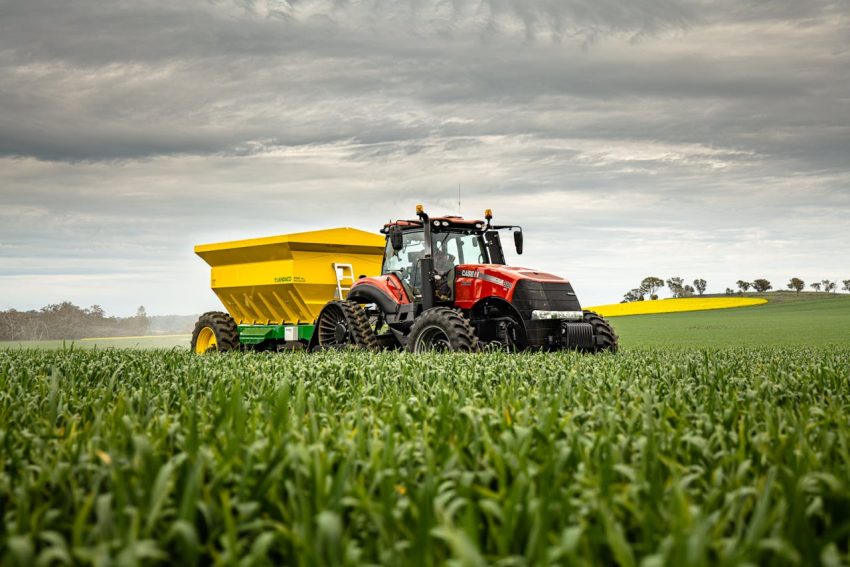In a move to rally America’s heartland, the Trump administration claims to be launching an investigation into soaring seed and fertilizer prices that have been choking farmers for years. On September 25, 2025, Agriculture Secretary Brooke Rollins dropped the hammer, announcing a joint probe by the Department of Justice and the USDA. The focus? Rooting out anticompetitive practices in the agricultural marketplace that keep input costs inflated, even as raw material prices stabilize. This comes amid a brutal squeeze: since 2020, seeds have jumped 18 percent, fertilizers 37 percent, fuel 32 percent, and interest expenses a staggering 73 percent. New tariffs could pile on even more pain in 2026, but Rollins’ five-point farm rescue plan promises antitrust crackdowns, massive government crop buys, export boosts, labor fixes, and direct subsidies to hit back.
The timing couldn’t be more critical. With global supply chains still jittery and energy costs volatile, the administration is framing this as a war on corporate greed strangling rural America. “The Trump Administration is holding these companies accountable and will investigate why input prices have not come back down,” said Secretary Rollins. If the probe uncovers foul play, expect swift enforcement under the Sherman Act: hefty fines, forced asset sales, or even company breakups. Picture the DOJ dissecting mergers like Bayer-Monsanto for their role in jacking up prices. Beyond that, the USDA could roll out input rebates, mandate supplier price transparency, or pump grants into R&D for cheaper alternatives like generic seeds and bio-fertilizers. Trade tweaks, such as renegotiated deals for potash imports, might ease raw material bottlenecks too. These aren’t pie-in-the-sky ideas; they’re extensions of past relief programs, now turbocharged with interagency muscle and potential congressional nods.
At the heart of the battle lies the iron grip of oligopolies in seeds and fertilizers, markets so concentrated they scream for monopoly scrutiny. In seeds, Bayer, Corteva, Syngenta, and BASF lord over more than 70 percent of the U.S. corn and soybean trade, fueling a North American sector worth $17.5 billion in 2024 with only modest growth ahead. Fertilizer behemoths like Nutrien, Yara, Mosaic, and CF Industries aren’t far behind, commanding over 60 percent of key nutrients in a $68.7 billion North American market set to balloon to $92.2 billion by 2033. Patents, exclusive contracts, and mega-mergers create sky-high barriers to entry, letting these giants hike prices without fear of rivals. A fresh 2025 analysis lays it bare: this stranglehold stifles innovation and funnels profits upstream, leaving farmers to foot the bill.
If the DOJ nails down evidence of abuse, like coordinated pricing or exclusionary tactics, these players could face monopoly-style remedies: spinning off divisions or behavioral handcuffs to foster real competition. The administration’s rhetoric, centered on “President Trump has made it clear: America’s farmers and ranchers will never be left behind,” hints at an all-out push. But don’t hold your breath for overnight wins; untangling these knots amid excuses like energy spikes could drag into years of courtroom drama.
Farmers, take heart: you’re not just bystanders in this fight. While Washington gears up, practical moves can blunt the edge of these input assaults. Teaming up through cooperatives like Land O’Lakes lets you bulk-buy seeds and fertilizers for 10 to 20 percent savings, dodging the big boys’ markups. Precision tech and soil-saving tricks, such as variable-rate applications or minimal-till farming, can slash fertilizer demands by up to 30 percent. Why not pivot to low-input champs like nitrogen-fixing legumes, weave in livestock for homemade nutrients, or lock in futures contracts to tame volatility? Advocacy packs a punch too: lean on the American Farm Bureau to amplify your voice for policy shifts, snag USDA loans and disaster aid, or skip middlemen with direct sales to consumers via CSAs.
Yet the raw injustice burns brightest when you stack corporate windfalls against farmers’ grind. Seed titans Bayer, Corteva, and Syngenta rule a U.S. market hitting $11.4 billion in 2024, with global revenues topping $50 billion yearly and projections doubling by 2033. Fertilizer kings like Nutrien and CF Industries raked in “extreme profits” through 2025, their oligopoly shielding them from cost dips. Meanwhile, U.S. net farm income claws back to $180.1 billion in 2025, a 29.5 percent rebound from 2024’s dismal $139.1 billion, but it’s propped up by a whopping $40.5 billion in government handouts, a 300 percent surge, plus livestock luck, not crop cash. Inputs devour 28 to 40 percent of row-crop budgets, leaving median farm households scraping by. This upstream heist of value? It’s the powder keg the Trump probe aims to ignite.
The administration’s antitrust artillery could rewrite the rules, but victory hinges on fierce enforcement and farmer grit. With markets teetering and tariffs looming, 2026 could mark a turning point, or just another skirmish in the endless war for fair fields. Stay vigilant, producers, the battle’s just heating up.


